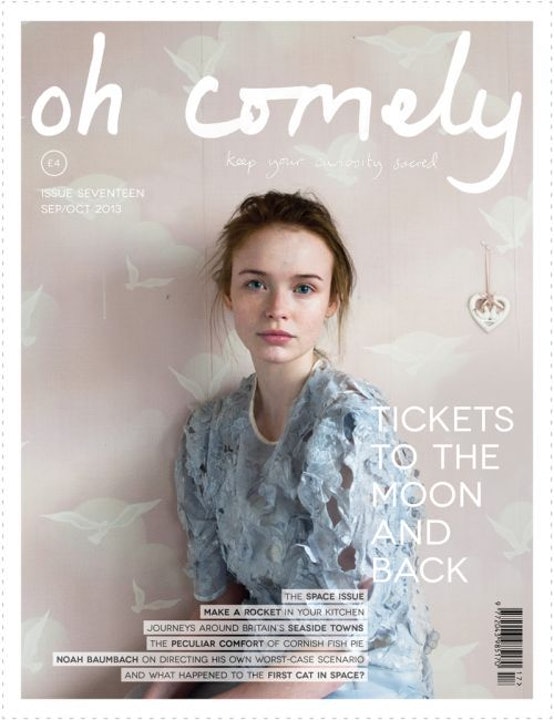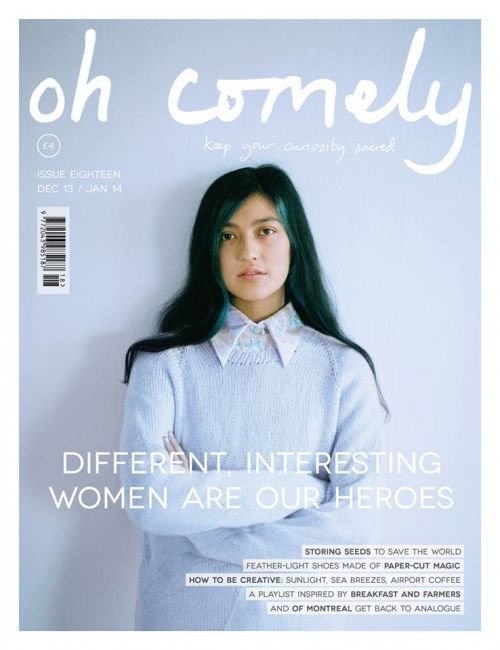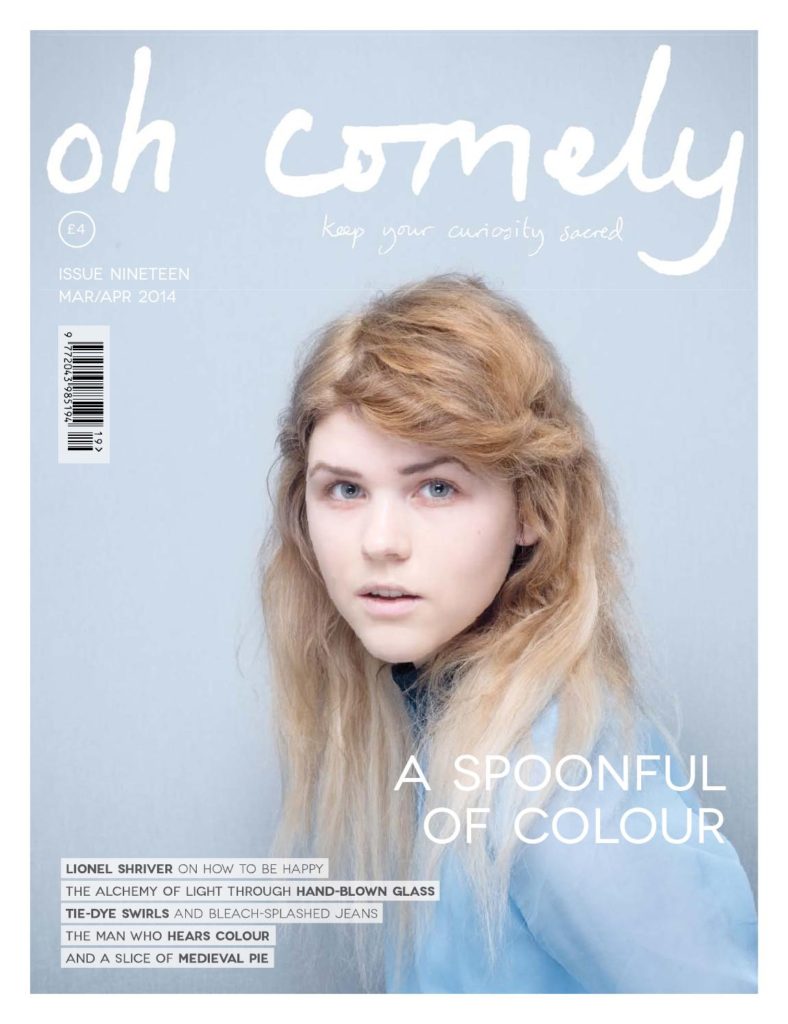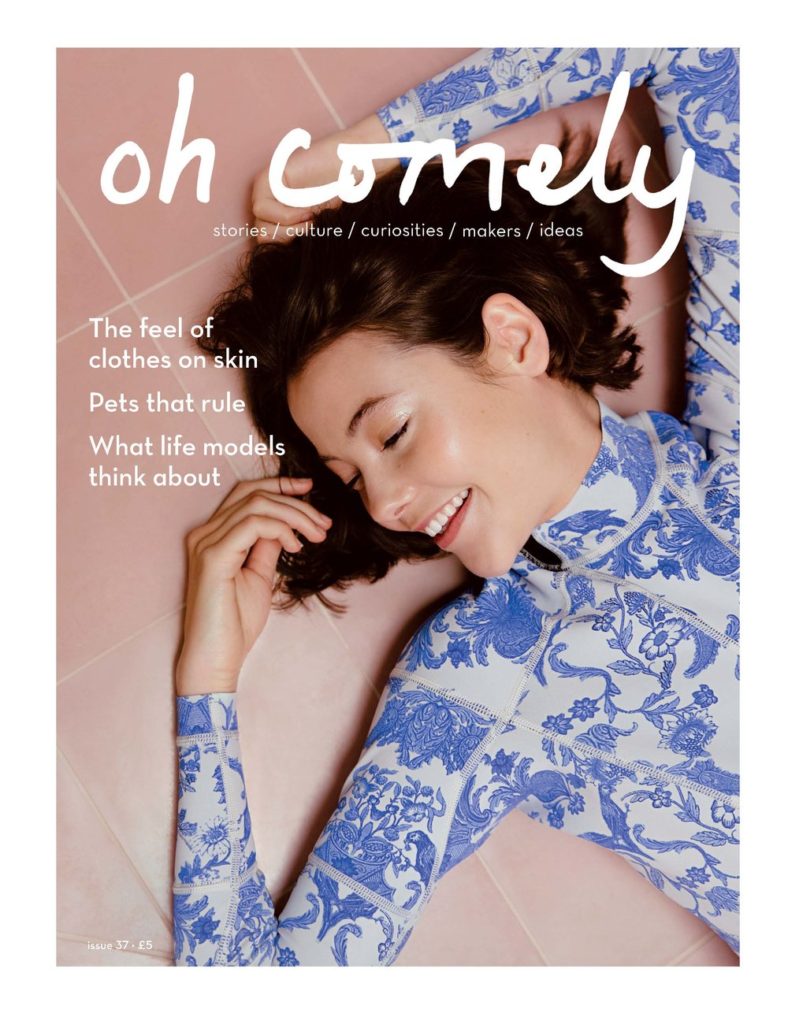Facts:
- Previously known as Oh Comely Magazine
- It is a women’s magazine covering food, recipes, film, fashion, music, art and culture.
- The first issue of Oh Comely was published in 2010 and co-edited by Des Tan and Liz Bennett, with Rosanna Durham and Dani Lurie as art editors
- Oh is a bi-monthly British magazine
- Oh is published in print and digitally, made in London by a small indie publishing house started by three friends.
- You can find Oh in some Sainsbury’s and Waitrose, most WH Smiths and many small newsagents, indie mag shops and some cafés, museums and galleries.
- With beautiful photography and illustration at its heart, Oh is a place to meet new people, hear their stories and leave you looking at life with a little, welcome fresh perspective.
- Oh Comely got its name from a beautiful and sinister song by Neutral Milk Hotel.
- The average age of Oh’s reader is aged 27.
Who owns Oh?
- It is published by Pirates Ahoy! a subsidiary of Iceberg Press, publisher of The Simple Things magazine.
- Iceberg Press announced their purchase of Oh Comely from Adeline Media in 2016.
Lisa Sykes: Editorial Consultant
- She previously edited national newsstand magazines by her mid-twenties before working on news and features at The Sunday Times.
- More recently she spent 10 years at Country Living Magazine, where she was responsible for a string of award-winning campaigns such as Fair Trade for British Farmers, Enterprising Rural Women and Made in Britain.
- Lisa then spent further stints at Hearst Magazines UK, working as Deputy Editor of Coast Magazine, as a senior editor on Good Housekeeping, and as Editor of Prima, one of the largest circulating women’s titles in the UK.
- She then joined The Simple Things as Editor in November 2013 after working for Future Publishing as an editorial consultant.
David Parker: Analyses Oh’s Audience
- David Parker is a highly successful publisher with a track record of growing brands and working every avenue and margin in the business.
- He published three of the largest magazine brands in the UK: Country Living, Prima and House Beautiful, alongside AllAboutYou.com
- David believes that lots of magazines have given up on their readers.
Oh’s Story
- Five years ago, three friends and colleagues were working for one of the biggest publishing companies.
- But they believed there was a better way to create and publish magazines – where the readers were as important as the advertisers, where the paper quality and design were valued and where the words and pictures weren’t always trying to sell stuff, didn’t portray perfection, didn’t tell people what to do and made them feel better, not worse.
- So they gave up their jobs, ploughed in their savings and borrowed the rest to set up their own publishing company – Iceberg Press – and buy The Simple Things, followed by Oh Comely two years later.
- Then, in 2018, they launched Pics & Ink to sell other publishers’ independent, beautiful and useful magazines too.
- Now they’ve reimagined Oh Comely into Oh, a mindful magazine with a fresh perspective.
Who is Iceberg Press?
- They make two magazines, The Simple Things and Oh Comely.
- They are proudly independent and put the reader at the heart of everything they do.
- The world of magazines has never been more vibrant and innovative, but you wouldn’t know it from the average newsstand today. Therefore, Iceberg Press aim to bridge that gap.
- Iceberg Press aimed to bring the best of the spirit of the independent publishing scene to a wider audience using the skills and knowledge they gained working for some of the world’s biggest publishing companies.
Quote from Iceberg Press:
“It’s all about the audience.
Chase the work, not the money.
Compromise isn’t our friend.
We will always make time for ideas.
We are stronger when we work with others.
We want good people to work in a good place.
Every year we will help a cause that matters.
We believe in a thing called Print.”
An alternative institutional structure
- In contrast to Men’s Health magazine, Oh Comely is an independent magazine published by Iceberg Press, a small London publisher which publishes only one other title.
- So this is a case study of Iceberg as an independent media company.
- Which shows how developments in new technology mean that small companies can also use the internet to communicate and target audiences.
- Niche audiences can then be targeted more precisely.
- Presenting new strategies for institutional development and creative working practice. As well as suggesting ways for keeping print popular and relevant – Iceberg’s branding includes a commitment to print over other media forms.
Media Representations:
- Oh Comely constructs a representation of femininity with its focus on creativity and quirkiness.
- The focus is on women as artists, entrepreneurs, athletes and musicians and female empowerment is a major theme.
- The absence of men as part of the representation of masculinity in Oh Comely magazine.
- Representation of social groups: Oh constructs a lifestyle through its focus on culture and the environment. This analysis would offer the opportunity to question some of the messages and values constructed by the magazine.
- Therefore it is possible to apply feminist critical thinking to this CSP for example theories of representation including
- Hall = theory of representation
- bell hooks = drew attention to how feminism privileges white women’s struggles, while advocating for a more holistic way of understanding oppression
- Van Zoonen = believed that the media portray images of stereotypical women and this behaviour reinforces societal views. The media does this because they believe it reflects dominant social values (what people believe in) and male producers are influenced by this
- gender performative – Butler =came up with the theory of the ‘Male Gaze’ and believes that male audiences get a sense of power and pleasure from watching women in the media who are often represented as objects for male pleasure. Most media representations of women are mainly for men – for the male gaze.






